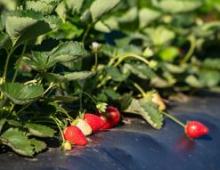Integrated Pest Management

Provides selected resources for Integrated Pest Management from agencies and organizations with an interest in the prevention, control, or eradication of invasive species.
Integrated Pest Management (IPM) is a process you can use to solve pest problems while minimizing risks to people and the environment. IPM is a science-based decision-making process that combines tools and strategies to identify and manage pests.
See also: What is IPM? (Southern IPM Center)
IPM is an ecosystem-based strategy that focuses on long-term prevention of pests or their damage through a combination of techniques such as biological control, habitat manipulation, modification of cultural practices, and use of resistant varieties. Pesticides are used only after monitoring indicates they are needed according to established guidelines, and treatments are made with the goal of removing only the target organism. Pest control materials are selected and applied in a manner that minimizes risks to human health, beneficial and nontarget organisms, and the environment.
The principles of IPM include:
- Identify pests, their hosts, and beneficial organisms before taking action.
- Establish monitoring guidelines for each pest species.
- Evaluate and implement control tactics.
- Monitor, evaluate, and document the results.
As defined in 7 U.S.C. § 136r (United States Code, Title 7 - Agriculture), IPM is "a sustainable approach to managing pests by combining biological, cultural, physical, and chemical tools in a way that minimizes economic, health, and environmental risks." This law requires federal agencies to use IPM in their pest management activities and to promote IPM in their regulations, procurement, and other activities.
Spotlights
All Resources
Selected Resources
The section below contains highly relevant resources for this subject, organized by source.
